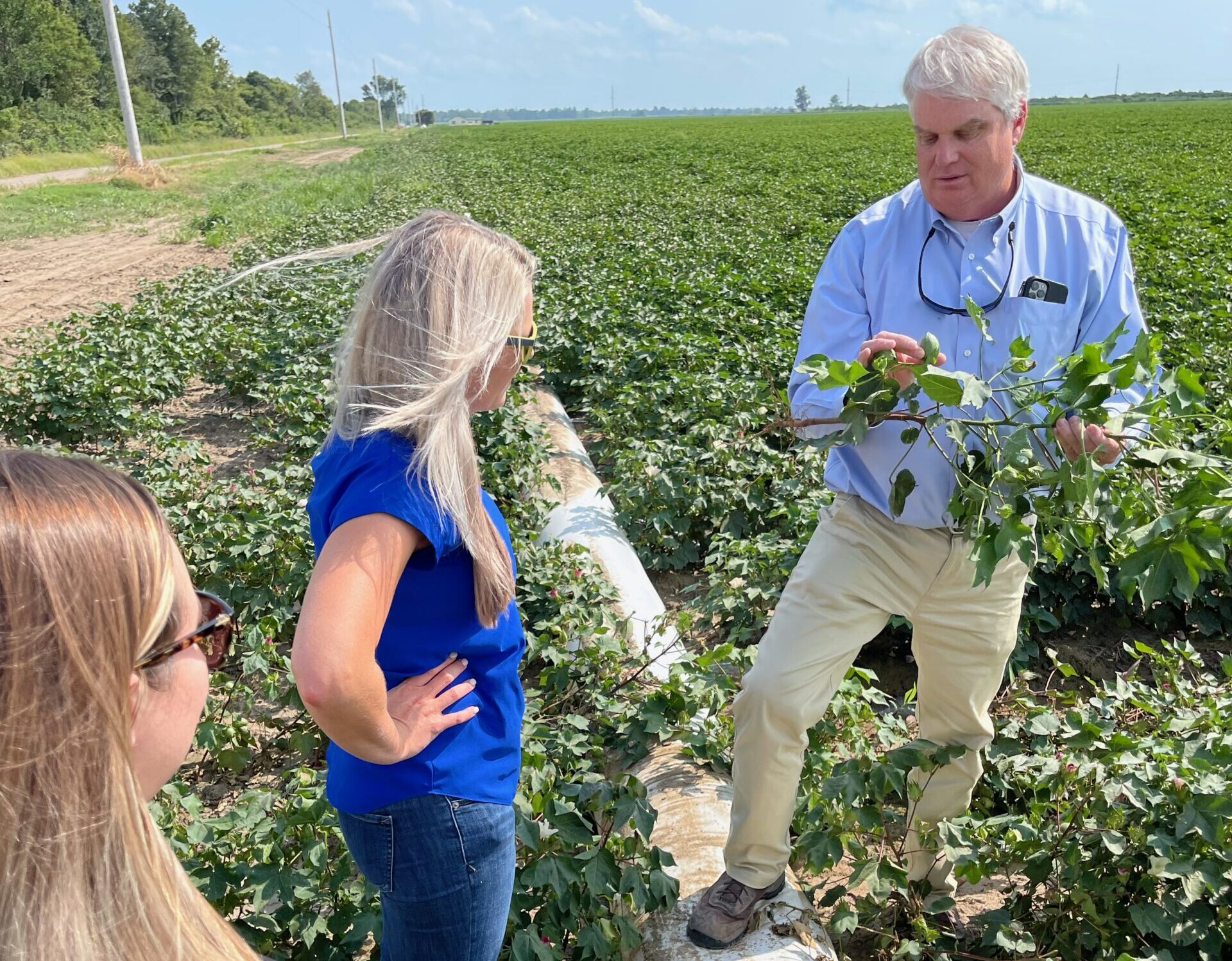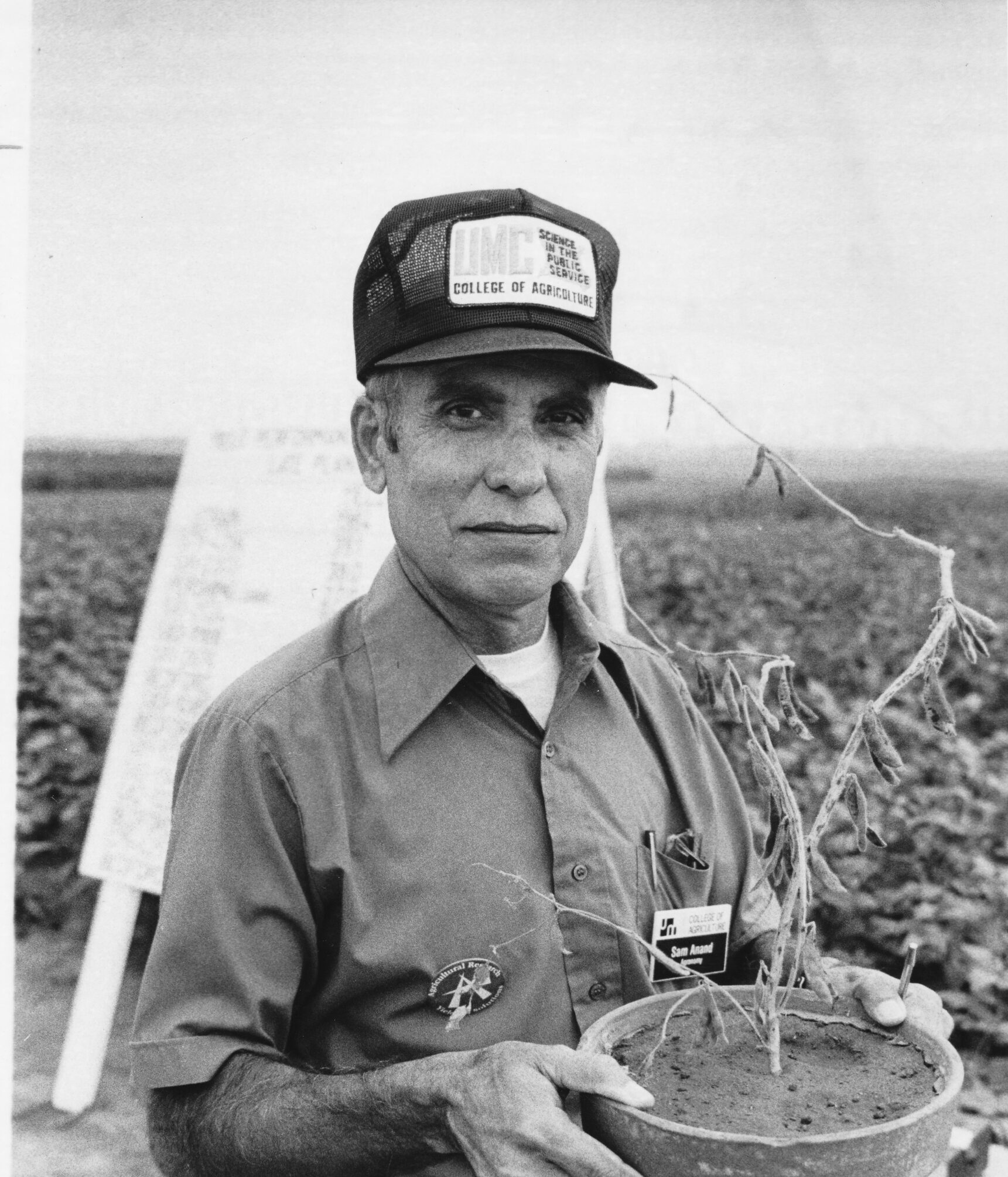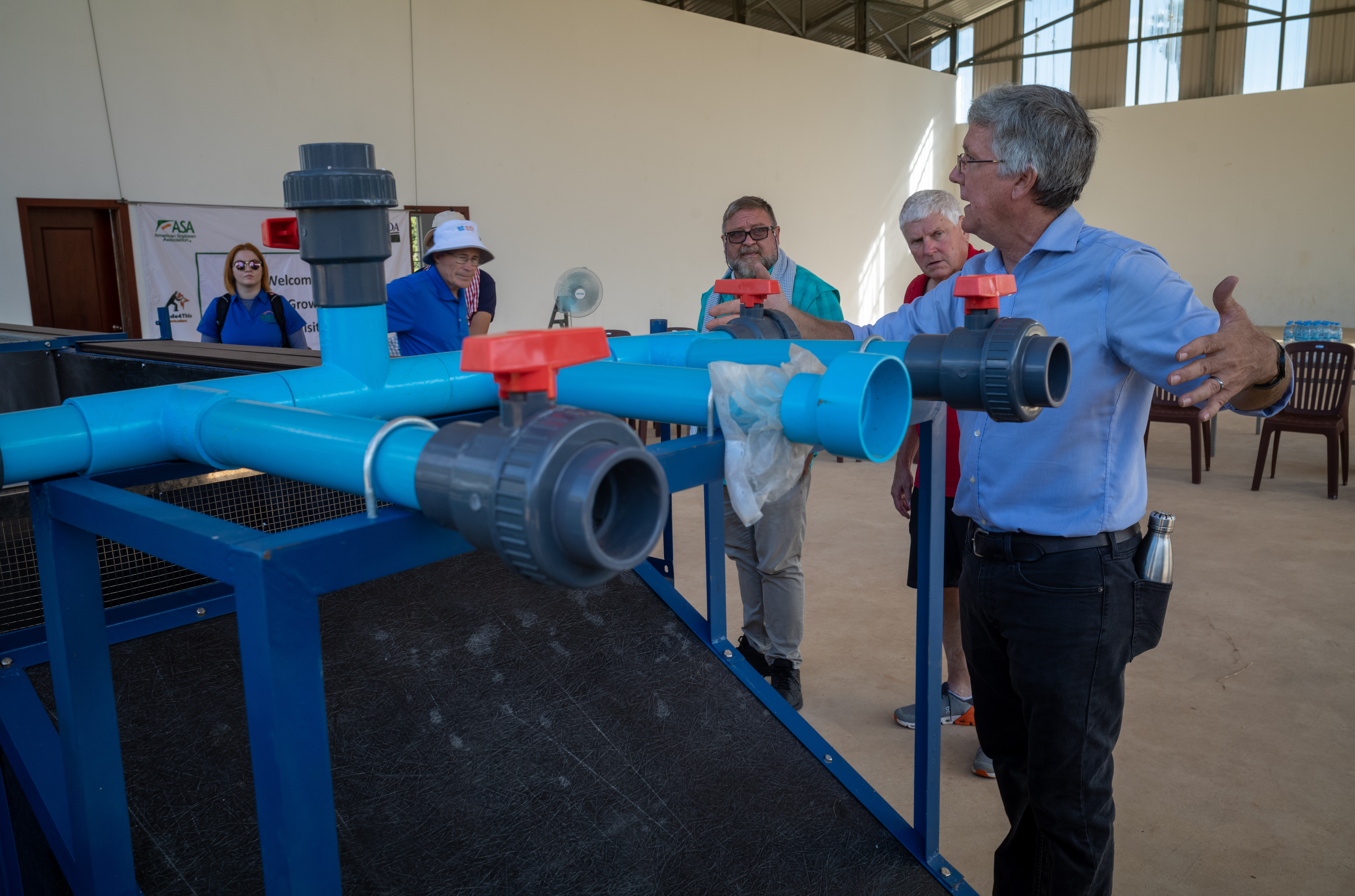Soybean production in the Bootheel of Missouri looks a little bit different. From irrigation to port accessibility, the methods of growing and marketing soybeans are unique compared to the rest of the state.
Soybean production looks a little different in southeast Missouri (SEMO). As you head south on Interstate 55, just past Cape Girardeau, you begin to enter the flatlands of SEMO soil. It is home to sweet tea, soybeans and mosquitoes large enough to carry you away.
Filled with cotton, rice, corn and beans – and everything in between – southeast Missouri is the most agriculturally diverse region of the state. Not only is it rich in its diversified row crops, but the Bootheel is the Show-Me State’s largest soybean-producing district.
For SEMO, soybeans are an economic engine with roots planted on nearly 19,300 farms and 1 million acres. Across this bountiful acreage, this district has an output of sales of more than $1 billion. In New Madrid County alone, the soybean industry accounts for more than 580 jobs and $424 million in revenue. Just last year, the region raised more than 57 million bushels of beans, according to the National Agricultural Statistics Service (NASS).
For many producers, including Missouri state Sen. Bean, Missouri Soybean Merchandising Council (MSMC) board member Baugh Meredith and farming duo Will Hunter and Laura Collins, soybeans are a fundamental piece of the family farm.
A SEMO Staple
“Soybeans have always been a staple in our operation,” states Sen. Bean. “Soybeans make for an excellent rotational crop. With the diversity on our farm, soybeans continuously perform well in a rotation with cotton and rice and put nutrients back in the ground for the next growing season.”
Bean represents Missouri’s 25th senate district. In his position, he is a strong advocate for the agricultural industry focusing on property rights, biodiesel and the soybean checkoff.
As a fifth-generation farmer, Bean shares he has always had a soft spot for soybeans. The senator served on MSMC for 13 years before leading up the national checkoff on the United Soybean Board.
Soybean supporters Laura Collins and Will Hunter share a similar sentiment to Bean.
“What makes soybeans so promising is that they are such a versatile crop and can be grown in most conditions,” said Hunter.
Collins and Hunter are sister and brother farming partners and collectively own and operate Willow & Co. in Bell City, Missouri.
“The farm is mostly soybeans these days,” said Collins. “We have found that input costs are less with soybeans, and we can receive a proportionate cost return on the crop.”
The Willow & Co. operation farms 6,500 acres growing cotton, rice, corn and soybeans, with more than 3,500 acres planted in beans.
“We know we’re similar to some other places in the world but there’s something different about it down here,” said Hunter. “It’s beautiful, it’s unique and it’s a wonderful place to raise a family and run a farm.”
Increased Irrigation
According to most farmers in southeast Missouri, what makes production stand out most is the region’s irrigation system.
Thanks to the Bootheel’s access to an abundant aquifer, many farmers utilize irrigation. According to the Missouri Department of Natural Resources (DNR), there are more than a dozen major aquifers underlying various parts of the state. Generally, an aquifer is defined as a saturated, permeable geologic unit that can transmit large quantities of water under ordinary hydraulic gradients.
Missouri is divided into eight groundwater provinces, and SEMO is known as the Southeastern Lowlands Groundwater Province. This province includes 11 counties and is more than 3,900 square miles. Because SEMO’s aquifer sits so high, the producers in the region are better able to access the area’s water source and limit the drilling of wells that take time and resources.

However, soybean growers wouldn’t be able to best utilize this aquifer if it wasn’t for the Little River Drainage District (LRDD), which allows the excess water to drain off the flatlands.
“In the Bootheel, we are very dependent on drainage because we are so flat,” said Collins. “And we are dependent on irrigation because our soil demands it.”
The LRDD helps protect the rural lands of southeast Missouri by converting the region from a swamp where mosquitos and snakes once ruled to some of the most productive in the Midwest. According to LRDD, the counties that make up the district contribute nearly one-third of all of Missouri’s agricultural income, providing a lifeline to the region’s economic development. Under the LRDD, more than 300 miles of levees are maintained and 2 million acres can be drained.
According to MSMC board member Baugh Meredith his family has been irrigating before he started farming. Meredith is third-generation farmer from Caruthersville, starting full time on the farm in 1977. Today, Meredith is bringing along the fourth generation to the farm with his son, B.T.
“Irrigation in the south is mostly pivot and furrow irrigation,” said Meredith. “Flood irrigation is also popular, especially in the rice-producing areas, but I have seen a lot more pivots going up in recent years. There are pros and cons to all irrigation, but the important thing is that our beans are healthy and hydrated.”
To aid with irrigation and ensure it reaches each part of the field, SEMO’s farmers typically utilize a hipper to plant beans on an elevated bed and set soybeans in 36- to 38-inch rows. This practice allows furrow irrigation to flow down each row and enter the bean’s root system. Producers do this by laying miles of poly pipe at the high end of the soybean field.
Willow & Co. Farms share they are 100% irrigated on all acres. They stated irrigation doesn’t always guarantee them a good crop but provides flexibility.
“With as much irrigation as we have, we are a work in progress all the time. It’s not as simple as planting your field, harvesting a crop and walking away,” said Hunter. “Every acre is strategically managed and cared for intensively. We put lot into our soybeans, so we need a lot more out from the market.”
More Marketability
Southeast Missouri’s steady irrigation systems bring with them healthy yields, strong soybean content and a matchable market to sell.
“In the Bootheel, we typically have a higher level of protein and oil content, making us more marketable internationally,” said Bean. “A lot of our beans are getting shipped to China because of our strong soybean profiles.”
To increase the marketability of the southern soybean crop, Cargill recently announced its plans to build a new soybean processing facility in Pemiscot County near Hayti and Caruthersville.
“You can’t ask for a better location,” said Bean. “It makes our beans more desirable and puts money in the pockets of farmers and rural Missourians.”
The facility will be the first of its kind for southeast Missouri with an annual production capacity of 62 million bushels of soybeans. The location of the new facility will expand the $94 billion economic impact of Missouri agriculture, accelerate economic development and enhance workforce opportunities in the Bootheel.
“Another facility to sell our soybeans is an obvious positive and provides deep value to our agricultural systems,” said Meredith. “It will also help our net basis become stronger and assist in getting unloaded faster, making harvest more efficient.”
Growing with Gratitude
With several benefits on its side, southeast Missouri makes an ideal place to raise a crop. “The sun rises in the east and sets in the west, and we are out in it every day,” said Hunter. “We understand we are like the rest of the world, but there’s just something different about it down here. It’s beautiful, it’s unique and it’s a wonderful place to raise a family and a farm.”
As you come off Crowley’s Ridge south of Cape and begin your descent into the land of cotton, peanuts and soybeans, remember the strong economic input and diverse richness southeast Missouri provides to the Show-Me State.
Missouri Soybeans continuously tips its hat to the growers not only in SEMO but all of Missouri and applaud the many contributions to the state’s top cash crop – soybeans.


